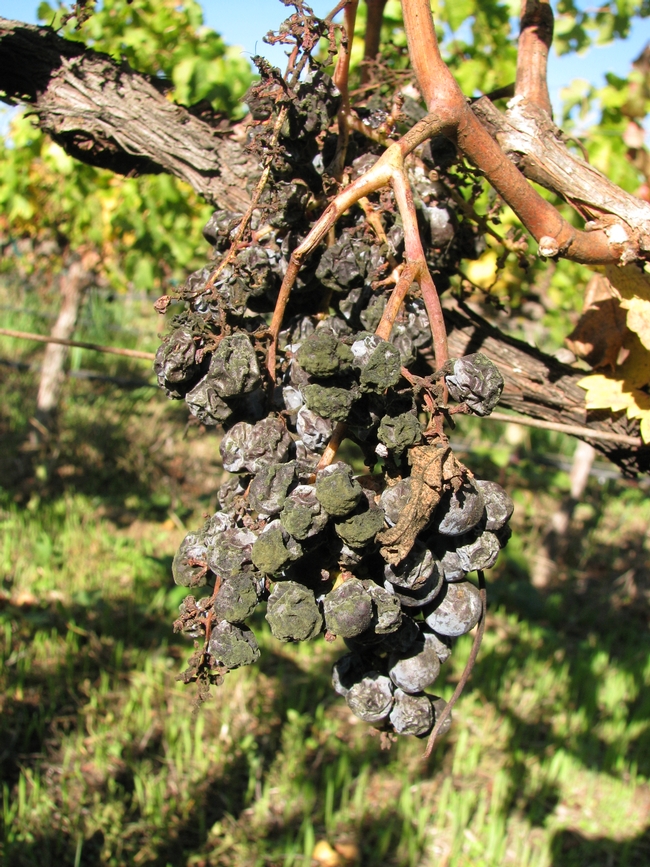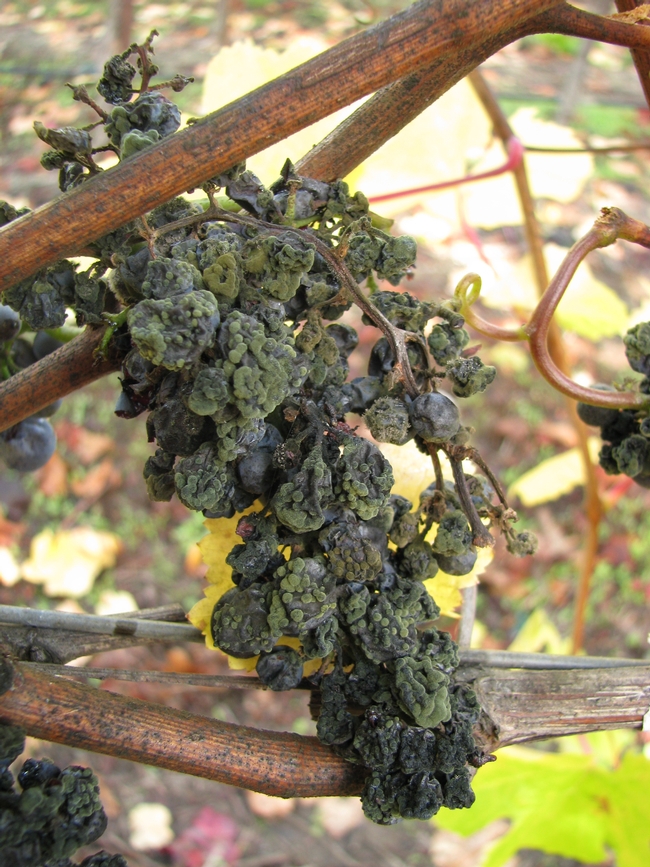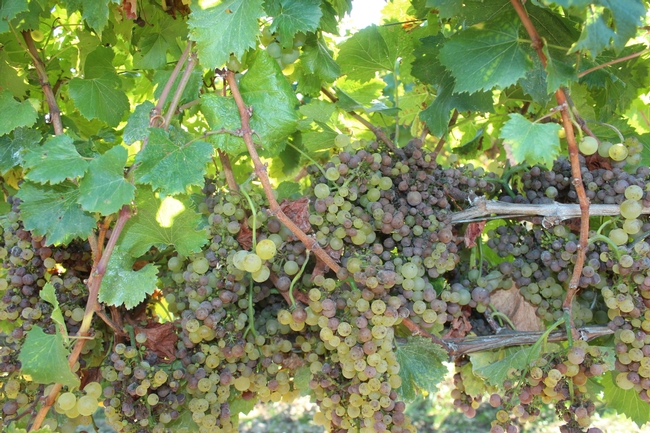For the first time many growers are facing the dilemma of what to do with fruit that will not be sold. Although wine inventories have been slowly building over the past few years, 2019 is the first year in which a number of growers are feeling the effects of excess supply due to the large 2018 crop.
Given that yields thus far for most growers have been “average” or better and there is significant unsold inventory of bulk wines, custom crushing uncontracted grapes in 2019 may not be a viable option. Hopefully there will be buyers as the harvest continues but in this market, the prices offered are likely to be less than the cost of production.
Allowing unsold fruit to remain on the vines may seem unthinkable yet with no income from those blocks, it makes sense. This means not dropping clusters by hand and not running a harvester in the vineyard to get the berries off.
From the perspective of a plant pathologist:
clusters that decompose over the winter - either on the vine or on the ground -
are not likely to have a noticeable effect on fungal disease pressure the following year given common vineyard floor management practices.

All common grapevine fungal pathogens exist inside vineyards. For example, fallen petioles, rachises that remain on the vine after mechanical harvest, pruning debris and woody tendrils that cling to trellis wires all support the growth of fungi. These fungi act as sources of inoculum that can infect wounds caused by pruning and suckering, and infect berries at bloom and other green tissue.
The fungi that colonize decaying berries include the same fungi seen growing on damaged berries before harvest including Botrytis cinerea and Cladosporium and Aspergillus species which are associated with Botrytis bunch rot, Cladosporium rot and sour rot respectively. Fungi can infect then colonize the ripening berries when spores enter through the slightest opening in the berry cuticle caused by sunburn or the presence of diffuse, unseen powdery mildew. Berries are an overwintering structures for these fungi and others.
Botrytis cinerea spores are ubiquitous given the fungus can survive on dead tissue as well as infect living tissue. It grows on dead calyptras (flower caps) and stamens after bloom and will infect a young berry through the wounds left when the cap is shed. In various studies, Botrytis sporulation in the lab occurred on petioles and rachises collected on the ground and remnants of rachises collected from canes after pruning.

- Eliminating pruning debris will remove the inoculum formed on decomposing clusters and pieces of canes prior to bud break. Vineyard access to alternate rows is required to incorporate last year's wood and cluster remnants while maintaining resident vegetation or a sown cover crop in the non-tilled rows.
All common grapevine fungal pathogens exist inside vineyards and the relative importance of allowing unsold fruit to remain on the vines should be put into perspective of other vine tissues that are also decomposing. Clusters that remain in the vineyard are not likely to have a noticeable effect on disease the following year if common vineyard floor management practices are followed.
Acknowledgement: Valuable input provided by Dr. Akif Eskalen, Cooperative Extension Plant Pathologist, UC Davis.
